October 05, 2016

The contemporary ceramics from Jingdezhen we looked at, as part of our exhibition for the London Design Festival 2016, engage with and move beyond traditional decoration in various ways. All the pieces were made by contemporary ceramicists, who were trained at the Ceramic Institute in Jingdezhen, the most prestigious educational institution for ceramics in China. With the exception of the first ceramic vase, which is from a book, all the depicted pieces are available at Rouge. Now that the exhibition is over, we are sharing the highlights with you in this blog post.
Traditional Chinese Ceramics
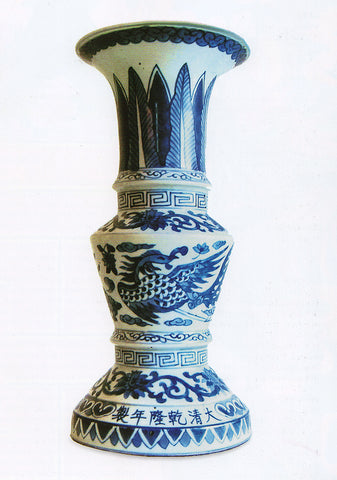 Blue and white ceramics have a long-standing tradition in China. The Chinese name qīnghūa cí (青花瓷) means literally blue flower ceramics. It was coined in the early 18th century, when the emperor first awarded officials for honest and uncorrupted service with blue and white vases decorated with lotuses. The combination of qīng (青) ‘blue’ and lián (莲) ‘lotus’ makes for the pun qīnglían (清廉) ‘honest and upright’. These blue and white vases have consequently become known as ‘award vases’ (Welch, p.30 & p.213).
Blue and white ceramics have a long-standing tradition in China. The Chinese name qīnghūa cí (青花瓷) means literally blue flower ceramics. It was coined in the early 18th century, when the emperor first awarded officials for honest and uncorrupted service with blue and white vases decorated with lotuses. The combination of qīng (青) ‘blue’ and lián (莲) ‘lotus’ makes for the pun qīnglían (清廉) ‘honest and upright’. These blue and white vases have consequently become known as ‘award vases’ (Welch, p.30 & p.213).
Contemporary Blue and White Ceramics from Jingdezhen by Shu Jing
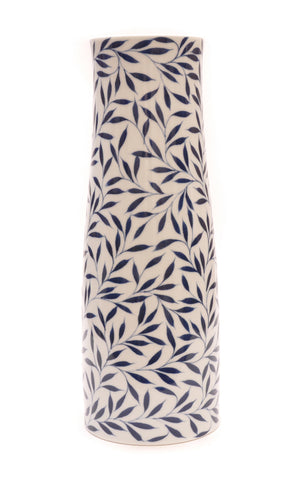
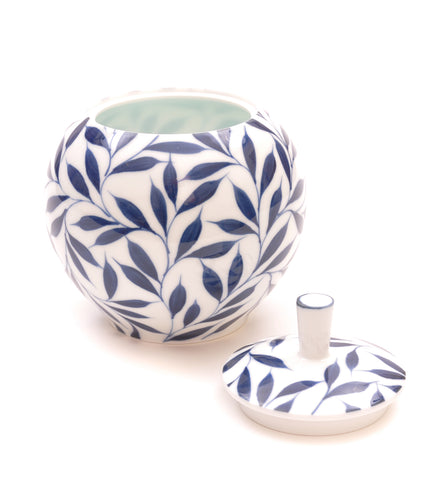
The ceramicist who designed these jars and vases uses traditional floral motifs but disengages from the traditional symbolism. The leaves on the tall vase, for instance, are traditionally used as an interlocking pattern (chán zhī wén 缠枝纹), to symbolize continuity, not as a main decorative motif. The leaves are based on bindweed (qiānniú 牵牛), but the strokes are simplified.
Flower Planter, Flower Bowl & Flower Stool by Yi Xiao Wen 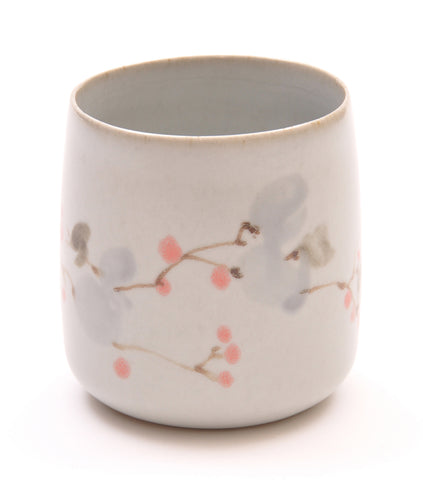
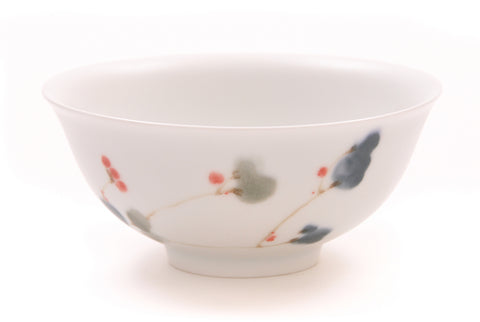
The artisan who designed and made these pieces draws inspiration from her everyday surroundings and hand paints her ceramics with artistic interpretations of flowers that grow in the garden behind her studio or with anthropomorphic renditions of her pets.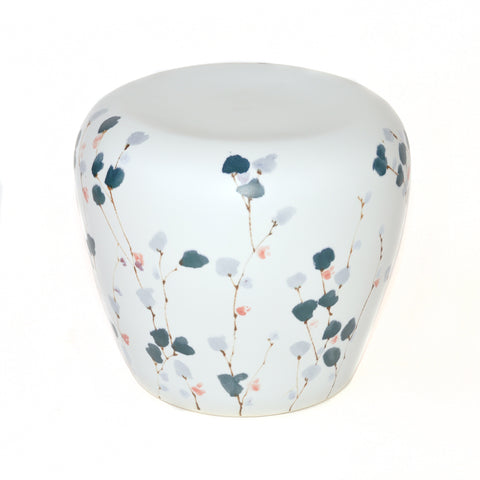
While her individualistic decorations stand in contrast to the traditional Chinese visual art, her pieces are invariably elegantly shaped and exquisitely executed. In addition to her collection of homewares, this designer also creates purely artistic ceramic pieces. The 'Mug with a Female Face Showing Teeth' below gives you an idea of it.
'Mug with a Female Face Showing Teeth' by Yi Xiao Wen
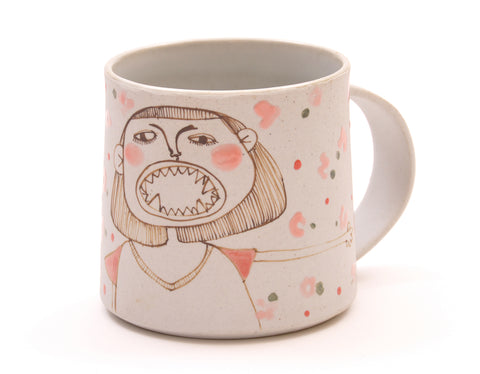
This mug is decorated with a female face with an open mouth, full of teeth. Traditionally, homewares are decorated with auspicious motifs that bestow blessings on their owners. Decorations that include humans (or immortals) are common motifs, but it is highly unusual for a female face not to convey elegance and beauty, but an unapologetic, if playful, expression of self-assertion.
Cats (māo 猫)
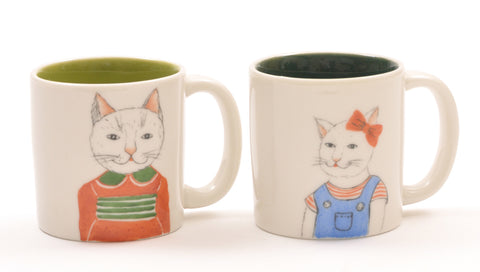
Cats (māo 猫) traditionally do not feature as an auspicious, decorative motif in the home. They are valued as animals that protect a family’s provisions from rodents. On the other hand, ‘rural superstition also associates them with poverty as they are attracted to homes abundant with mice and rats – which are seen as auspicious to the Chinese for their ability to hoard things and accumulate wealth … - only to chase them away or worse yet, kill them!’ (Welch, p.115). The contemporary designer showcased here, who is depicting anthropomorphic cats on her ceramics, clearly does not share these traditional, superstitious concerns.
The Goldfish and Carp Collection
In the Chinese tradition, the carp (lĭyú 鲤鱼) is a popular decorative motif, because it is a pun for ‘enormous wealth’ (lìyù 利餘). The goldfish (jīnyú 金鱼) is a pun for gold (jīn 金) and jade (yù 玉) combined, and therefore is also an important symbol for riches. However, the goldfish and the carp depicted on these pieces are based on the Japanese Ukiyo-e carp style.
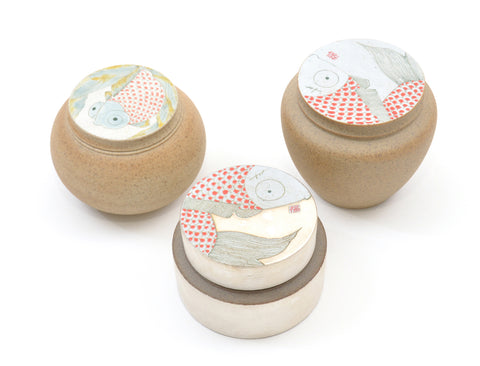
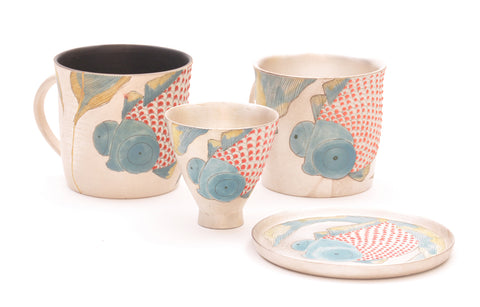
The ceramicist, who has specialized in this technique, explains it in more detail in the short interview shown on the screen. It is remarkable, that glaze is only used for the red scales and the inside of the mug. The background is painted with silver, which is fired at 1280oC.
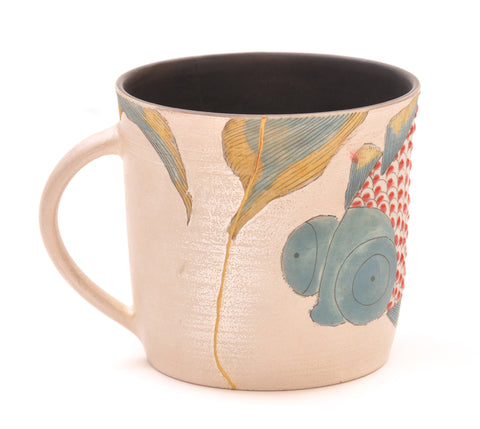

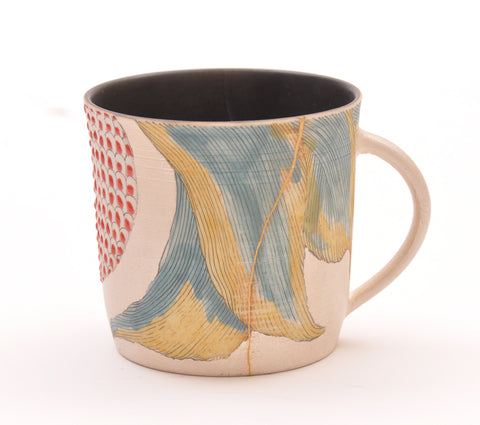
The mug shown above has been repaired with gold, using the traditional Japanese technique of Kintsugi (golden joinery). As this gives a unique appearance to the pieces, repaired pieces are often considered even more valuable.
Overall, we've found the contemporary ceramicists Lei has visited in their studios in Jingdezhen to engage with and adapt to the tradition of Chinese Visual Art in many different ways, often conforming to the tradition in one way while moving beyond it, or even challenging it, in other ways at the same time. And this is, indeed, how the tradition itself has evolved and developed over the centuries.
Please note: If you would like to buy any of the ceramic pieces featured in this blog post, but can't find them on our website, do get in touch, and we'll be happy to assist you. We'd also love to hear from you if you have comments or feel inspired by this post. For contact details, please click here.
References:
For the interpretation of the motifs, we have mainly used two books:
Chinese Art – A Guide to Motifs and Visual Imagery (Patricia Bjaaland Welch, 2008)
Hidden Meanings In Chinese Art (Terese Tse Bartholomew, 2006)
February 26, 2025
We invite you to explore our latest collection of homeware, gifts, and seasonal pieces in our Spring Round-Up Blog Post. Whether you're looking for timeless Japanese ceramics, striking prints, or thoughtful gifts, there's something special waiting for you at Rouge this spring.
December 23, 2024
2024 has been an incredible year for Rouge, but it hasn’t been without its challenges. Together, we navigated a tough year of reduced foot traffic and shoppers on Stoke Newington High Street. But thanks to you—our cherished customers, friends, and families—we’re heading into our 20th year in business stronger than ever! Read our year in review here.
November 07, 2024
